Pear trees, like apple trees, grow best in temperate zones – regions with cold winters and moderate summers. The Western Cape, for this reason, accounts for more than half of all the pears produced in South Africa.
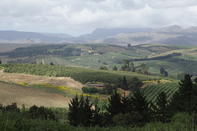
As presented in the 2017 Hortgro Tree Census report, the total area under pear production amounted to 12 265 ha in 2017.
The Ceres Valley has for many years been the main producer, accounting for 37% of the total area under production in 2017. The Langkloof area was the second-largest producer, accounting for 14% in the East and 2% in the West, followed by Wolseley/Tulbagh and Groenland, which each had 12% under production.
Villiersdrop/Vyeboom accounted for 9%, whereas the Klein Karoo accounted for 7% and the Southern Cape, Piketberg and Somerset West each accounted for less than 2% of the area under production.
Pear Varieties
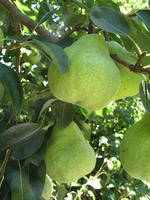
The main pear cultivars planted in South Africa are Packham’s Triumph, Forelle, Bon Chretien and Abate Fetel. Packham’s Triumph accounted for 33% of the area under production in 2017, followed by Forelle with 26%, Williams Bon Chretien with 20% and Abate Fetel with 7%.
As seen on the Fruits site, Forelle developed as a chance seedling in Germany and was introduced into South Africa in the 1800s. The variety takes its name from the rainbow trout because its skin has a blush resembling the colour of the trout. Packham’s Triumph was developed in Australia, out of a cross between Bon Chretien and St Germain, and made its way to South Africa in 1992.
Bon Chretien originated in the United Kingdom and is suited for the fresh market and canning. Abate Fetel was developed out of several local cultivars by a French Monk, Abbe Fetel, in 1866 and is in high demand in Europe.
Season
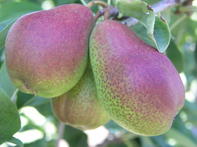
Pears are a summer fruit, with the harvesting time dependent on the pear variety and climatic conditions. Forelle pears in South Africa are harvested from late February to late March. Packham’s Triumphs are harvested from mid-February and Bon Chretien from early to late January.
Sales
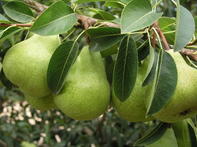
South Africa is a small international producer in terms of the area under production, but one of the leading exporters. Production is primarily aimed at the export market, followed by the processed and then local fresh market. Most of the processed fruit are canned and only small volumes are dried.
Europe and the United Kingdom are South Africa’s main export destinations for fresh pears in terms of volumes and revenue. Cultivar selection, for this reason, is to a certain extent dictated by these markets. The EU’s preferences lean towards crisp cultivars, such as Abate Fetel and Doyenne du Comice, whereas the United Kingdom prefers softer pears.
Uses
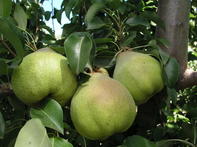
Pears are highly nutritious, rich in vitamins, minerals, fibre and antioxidants. They can be enjoyed as a fresh snack or used fresh in salads. They can be canned, dried, pureed and juiced. They are used for cooking and baking.